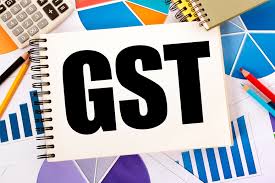Direct tax mop-up set to exceed estimates
Direct tax collections are set to exceed the government’s revised estimates, potentially helping narrow the fiscal deficit.
With only 15% of the target remaining to be collected in the remaining two months of this fiscal, the income tax department is set to exceed even the revised estimates for direct taxes in the Union Budget. The department collected 30% of its full-year target in the last two months of the previous fiscal.
The revised estimates for this fiscal assumes a 26% decline in direct tax collections in February-March. That compares with a 57% growth in the 10 months to end-January, pointing to the finance ministry’s possible underestimation of revenues.\
If direct tax collections remain buoyant in the last two months of this fiscal, as income tax officials expect, it may help the government curtail the fiscal deficit from a revised estimated 6.9% of GDP, experts said.
Direct tax collections, net of refunds, was ₹10.45 trillion as of 2 February against a revised full-year target of ₹12.5 trillion. Corporation tax collections stood at ₹5.48 trillion, about 14% short of the revised estimate of ₹6.35 trillion. Personal income tax collections stood at ₹4.76 trillion against a target of ₹6.15 trillion.
Gross direct tax collection rose 42% to ₹12.07 trillion as of 2 February from ₹8.5 trillion in the previous year. Refunds to taxpayers fell 17.8% from the previous year at ₹1.52 trillion.'
The tax mop-up is pretty robust, so it may be unreasonable to assume that there will be a year-on-year contraction in the last two months of the fiscal, especially as collections from tax deducted at source (TDS) in the last two months and the advance tax for the fourth quarter is yet to come in. Moreover, economic activity remains strong," an income tax official said, requesting anonymity.
Another official said at least 30% more tax is expected this fiscal, against the estimated 15% target.
In the budget presented on 1 February, the revised corporation tax collection estimate for FY22 saw a 16% increase over last year’s budget estimate, while the personal income tax target was raised by 9.6%. That translated into a 14.2% increase in the current fiscal’s overall direct tax collection target.
Motilal Oswal Institutional Equities projected an underestimation of total revenue growth, including direct and indirect, of ₹1.7 trillion in the current fiscal and by ₹2 trillion in FY23. “For the second consecutive year, the government appears to have underestimated its revenue growth in FY22RE and FY23BE… Such conservative receipt estimates are the primary reason for higher-than-expected fiscal deficit and, thus, borrowings in FY22 and FY23, which spooked debt markets," it said in a note.
According to Sreejith Balasubramanian, an economist at IDFC Asset Management Co. Ltd, “Corporation tax revenue estimate is quite conservative at 0.3% of GDP below our forecast, which could help ease the final FY22 fiscal deficit."
The advance tax mop-up in the December quarter rose by nearly 50% to ₹1.16 trillion from ₹92,000 crore in the year earlier. Advance tax, which is paid as and when the money is earned in four instalments rather at the end of the fiscal year, saw a 65% growth in the mop-up in the nine months to December to ₹3.47 trillion.
Source:https://www.livemint.com/news/india/direct-tax-mop-up-set-to-exceed-estimates-11644174007684.html
Download our App to get knowledge updates: https://play.google.com/store/apps/details?id=com.app.gstmitra




Comments
Post a Comment